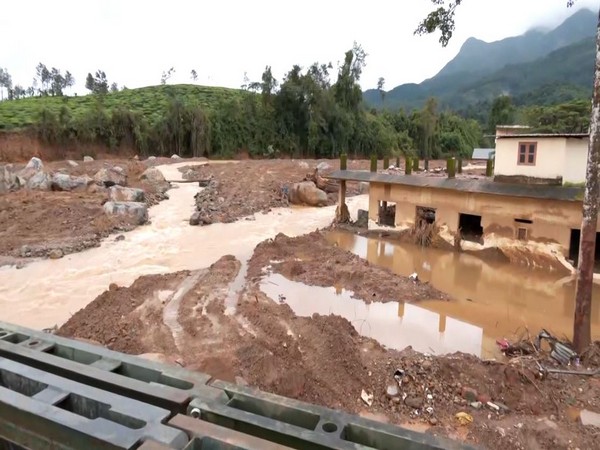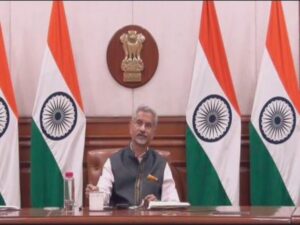
New Delhi [India], August 6 (ANI): The Kerala government approved numerous projects in Wayanad over the past four years, including those related to non-coal mining, without allegedly conducting a thorough study of the district’s topography and geomorphology, according to sources at the Environment Ministry on Monday.
As per the document assessed by ANI, the state government approved several development projects in the district, including Hill Highway in Wayanad and installing optical fibre cable in several regions of the district.
Sources at the environment ministry said, “The Kerala government granted approval to several projects and gave environmental clearance to four projects in Wayanad districts without considering the soil topography, rock condition or geomorphology.”
“A combination of factors, including a lack of adequate study of the topography and geomorphology and insufficient safeguards against human activities such as large-scale urbanisation and tourism, have made the region more prone to disasters, appearing to be exacerbated by human impact,” the sources told ANI.
As per the document, the state government has granted Stage-I and Stage-II approvals for various projects in Kerala and Wayanad District over the last ten years.
The in-principle agreement and formal approval under the FC Act are commonly referred to as stage I and stage II approval under the FC Act, respectively.
These include the provision of 4G/5G coverage to uncovered villages in Wayanad District by Bharat Sanchar Nigam Limited, which received approval on March 20, 2023.
Additionally, the construction of a twin tunnel with four-lane approaches to improve connectivity between Aanakampoyil, Kalladi, and Meppadi in the Kozhikode and Wayanad Districts was approved on March 31, 2023, though only Stage-I approval has been granted by the regional office of the Ministry of Environment in Bangalore, but no work has commenced.
Another project includes the Hill Highway construction from Ambayathode to Boys Town stretch in Kannur District, approved on September 6, 2022.
Furthermore, two optical fibre cable projects, one from Kartikulam to Kutta border via Thetturoad and Appapara, and another from Pulplally to S.Bathery Mananthavady Span, were approved on November 18, 2022, and October 25, 2022, respectively.
Lastly, the Hill Highway project in the Wayanad District, covering the Kuttiyadi Churam stretch, received approval on August 25, 2022.
In the past three years and the current year, several projects (non-coal mining) have also been granted environmental clearance. These include granite building stone quarries approved on May 25, 2024, and January 24, 2023. Another granite building stone quarry project received approval on January 24, 2023. Additionally, another project received clearance on June 18, 2024.
Meanwhile, the Centre issued a sixth draft notification to declare over 56,800 square kilometres of the Western Ghats across six states, including 13 villages in Kerala’s landslide-hit Wayanad, an Ecologically Sensitive Area (ESA).
The notification was issued on July 31, a day after a series of landslides claimed over 300 lives in Wayanad.
Last week, a devastating landslide struck Wayanad, causing significant damage and disrupting life in the region. The Kerala government pegged the official death toll in the Wayanad landslide disaster at over 300, even as the search for survivors and bodies of victims entered the seventh day on Monday.
Union Environment Minister Bhupendra Yadav has attributed the recent disaster to a deadly mix of uncontrolled construction, illegal mining, and uncontrolled habitation.
Yadav said that an expert panel was set up in April 2022 to find a breakthrough and is in “constant touch with the states.”
“Since the ownership of forests is with the states, we had asked them to submit their objections and suggestions to the committee headed by former Director General of Forests, Sanjay Kumar. There should be consultation with local stakeholders too. Instead of doing this, illegal human habitat expansion and mining were allowed (in Kerala), which resulted in this natural disaster (in Wayanad),” he told reporters.
Scientists from the state and beyond attributed the disaster to a deadly mix of forest cover loss, mining in the fragile terrain and climate change. (ANI)

















